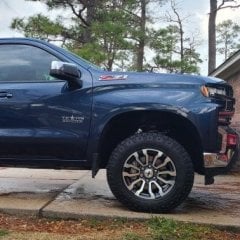first drive Just Do It! - 2020 Silverado 1500 3.0L Duramax Diesel
-
Similar Content
-
transfer case 2015 GMC Sierra NQH transfer case stuck in neutral.
By Detroit Diesel,
- transfercase
- Nqh
- (and 7 more)
- 0 answers
- 111 views
-
- 0 replies
- 145 views
-
- 3 replies
- 390 views
-
Nothing but PROBLEMS with the 2024 GMC Denali Ultimate 2500
By ShibaPauly,
- GMC
- Denali Ultimate
- (and 8 more)
- 14 replies
- 1,537 views
-
- 6 replies
- 398 views
-
-
Recently Browsing 0 members
- No registered users viewing this page.
-
Forum Statistics
246k
Total Topics2.6m
Total Posts -
Member Statistics
-
Who's Online 19 Members, 0 Anonymous, 1,757 Guests (See full list)
















Recommended Posts
Join the conversation
You can post now and register later. If you have an account, sign in now to post with your account.